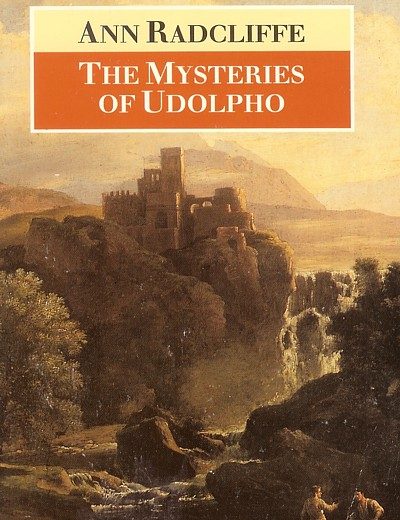It’s hard to believe it’s the middle of May already. Spring has been desperately trying to spring here in the Northeast. Here’s hoping our recent bought of warm and sunny weather is going to stick this time! April proved to bring us a plethora of rain. May has certainly blessed us with flowers. One of my four lilac bushes is literally drooping to the ground under the weight of its own flowers. The small murder of crows I’ve been trying to lure in with peanuts and cat kibble are slowly making a comeback by perching in the trees outback and cawing at me. Our back yard is mostly set up and ready to go for a summer’s worth of friends, family, evening fires, fair weather, and food. In between all of that, along with writing and submitting a couple novels and a bit of dark poetry to some publishers – one of which has already been accepted – I’ve managed to get in some reading time.
In last month’s Book Bag, I’d just started Ann Radcliffe: The Great Enchantress by Robert Miles. I’m happy to report, I’ve emerged victorious from this adventure into some serious literary analysis, yes, Sigmund Freud even showed up! It reminded me way too much of all those English classes where the instructor insists that the color of the chairs is symbolic of the four Cardinal directions as specified in some mystic’s dream book from the early 15th century. Maybe it was, maybe it wasn’t. I don’t use a lot of symbolism when I write and the one time I tried to be clever that way, I got so bogged down in trying to remember what represented what that I completely lost track of where I wanted to go with the plot. I tend to believe the chair was blue, red, yellow, or green because the writer liked that particular color and thought it would be nice, but maybe that’s just me. That aside, I learned the difference between ‘horror’ and ‘terror’ as it was defined back in the late 1700s and that Romances weren’t considered Novels. An interesting and educational read despite the academic dryness.
While slogging my way through that, I managed to get in some good old short stories from Israel Finn’s collection, Dreaming At The Top Of My Lungs. I’ve been eyeballing this book for a good long while and finally decided it was time to give it a read. As with any collection or anthology, you’re going to find some you really enjoy, some that leave you confused, or some that just don’t hit the spot. Happily, most of Finn’s stories were very enjoyable and better still, memorable! My biggest complaint on this one is that it was way, way too short! I’m hoping to add more of Israel’s work to the TBR pile in the future.
I recently dove back into the dark and murky depths of another Hunter Shea cryptid book. This time it’s poor old Nessie that he’s picking on. Hot on Shea’s aquatic tail (see what I did there?) is a Lyle Blackburn book that takes us beyond the realm of Boggy Creek to look at other cryptids of the ‘Squatchier kind found deep in the American South, but we’ll save any further details on those for next month.
2017 Bookshelf-To-Date
January
Montauk Monster by Hunter Shea
February
Maledicus by Charles F. French
March
Doctor Sleep by Stephen King
Mysteries of Udolpho by Ann Radcliffe,
The Beast of Boggy Creek by Lyle Blackburn
April
Zen in the Art of Writing by Ray Bradbury
Sinister Entity by Hunter Shea
May
Ann Radcliffe: The Great Enchantress by Robert Miles
Dreaming At The Top Of My Lungs by Israel Finn
Loch Ness Revenge by Hunter Shea

Recent Comments